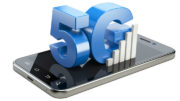Dolby Digital. It’s the best sound you’ll get from a pay-TV system. While Dolby Atmos and other systems certainly give you better quality, your pay TV system will give you the best and clearest sound using 5.1 Dolby Digital. Although this is an older standard, it is the one used by virtually every content provider. (DIRECTV pay-per-view events and 4K programs can use Dolby Atmos in some cases.) There’s no need for a pay-TV system to offer more because the channels themselves don’t offer more.
Your DIRECTV receiver or Genie client gives you theater-quality sound using Dolby Digital technology. But if you’re hooked to an inexpensive TV, you’re not hearing that high quality anyway. TV speakers aren’t tuned to give you all the booming, surrounding action, and that’s why people put in high-end sound systems.
What if you just want to watch TV?
Bedrooms and guest rooms don’t need fancy home theater experiences. In most cases your TV is taking the Dolby Digital experience and mixing it down to good old stereo. This can cause problems such as:
- Audio drops of 10 seconds or longer after pausing, rewinding, or fast forwarding
- Clicks, pops, or strange tones at unexpected times
- Weird echoing sounds
Occasionally, your TV will almost sound like it’s underwater. This happens rarely when the Dolby signal isn’t decoded properly. Usually a reboot solves it, but in those rare cases when it doesn’t, the AT&T hardware itself isn’t usually to blame.
What’s the fix?
Less expensive TVs don’t do a very good job of decoding that Dolby Digital soundtrack, and it’s not doing you any good anyway, so why not turn it off? Every DIRECTV broadcast also includes mono or stereo sound, good-old-fashioned sound that’s pretty much guaranteed to work with any good-old-fashioned TV. If you have your TV connected to your receivers via RCA cables, you’re already using the built-in stereo sound, but if you are connected via HDMI you’re probably using Dolby Digital. Turning Dolby Digital off may solve some of your audio problems, so it’s worth a try.
If you have a Genie system:
- Press MENU on your remote.
- Scroll down to Settings.
- Arrow over to Audio and press SELECT.
- Arrow down to Dolby Digital and press SELECT.
- Choose “Standard Audio” and press SELECT.
- Press EXIT to go back to live TV.
If you have an older system:
- Press MENU on your remote.
- Arrow down to Settings&Help and press SELECT.
- Make sure that Settings is highlighted and press SELECT.
- Arrow down to Audio and press SELECT.
- Arrow down to Dolby Digital and press SELECT.
- You will see a dropdown. Use the arrows to highlight “Off” and press SELECT.
- Press EXIT to go back to live TV.
Will you hear a difference?
On most televisions without a sound bar or A/V receiver, you’ll hear no difference whatsoever. The only things to change are that those annoying clicks and pops will be gone, and you’ll occasionally hear a “bonk” when you press a button on the remote. The “bonk” is just to tell you the button press won’t do anything. It’s only enabled if you have Dolby Digital off, because inserting it into the Dolby Digital stream is apparently harder than you’d think.
If you do have an A/V receiver, your system will use Pro Logic II to decode surround information instead of Dolby Digital. Pro Logic is a “derived” system. In other words it creates surround channels by interpreting the stereo signal. If a sound is common to both channels, it gets moved to the center channel. If it is out of phase, it gets moved to the rear channels.
In general the surround “effect” is somewhat less noticeable with Pro Logic II. Also, depending on your system, the bass may be less prominent because with Pro Logic II, bass is only sent to the subwoofer if certain frequency ranges are present. With Dolby Digital, the bass channel is encoded separately.
You may notice that vocals seem a bit muddier with Dolby Pro Logic II but a lot of people also say that the vocals seem louder compared to the background. This can be due to a poorly balanced A/V receiver system or simply because the person encoding the audio in the first place didn’t do a very good job.
It’s your choice
I would encourage everyone to play around with this setting and decide for themselves which they like better. Remember it’s your TV and you have the right to watch (and listen) to it your way.





